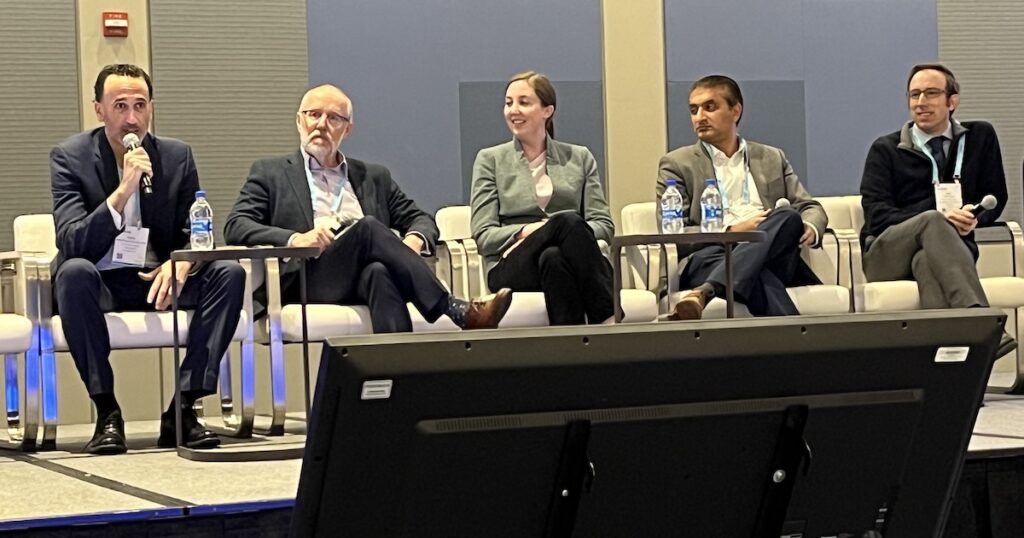
CHICAGO — Digital therapeutics have the potential to give patients a new way to access care and lessen the burden on providers, said panelists at the 2023 HIMSS Global Health Conference & Exhibition here on Tuesday. But startups face some challenges when it comes to getting these tools into patients’ hands.
Kelsey Maguire, managing director at Blue Ventures Fund, said many companies are interested in partnerships with health plans, which bring the allure of a large member base. But that might not be the best distribution channel for every patient population.
“I don’t know about you, I’ve gotten lots of emails from my health plan about programs. I’ve never enrolled in one. And so it can actually be a very difficult channel if it’s not the right channel for that condition or that marketing strategy, etc.,” she said. “Is this a patient like a pregnant woman who’s out actively looking for resources available to her? Maybe direct-to-consumer marketing might be effective. Is it going to require a prescription? If someone’s working really closely with a particular specialist, do you really want to be going through the providers?”
Chris Wasden, chief strategy officer at digital therapeutics company Twill, said that decision can have an impact on uptake. He said activation — the number of people who download one of the company’s digital therapeutics and begin to use it — among large health plans is in the low single digits. But activation among the employer group could be 10% to 20%.
Wasden argues that’s because their marketing isn’t necessarily very effective: Twill once even tested its marketing strategy against a health plan’s and a hybrid approach.
“Our ad copy outperformed theirs by 10 times,” he said. “The problem is, even after we showed the evidence, they still went with theirs. Because that’s what they’re comfortable with, that’s what they like, even though the data shows that their approach to direct-to-consumer marketing is not very effective.”
Dr. John Torous, director of the digital psychiatry division at Beth Israel Deaconess Medical Center, said downloads are important, but patients also need to keep using the digital therapeutic.
“I’m going to train all my colleagues to use this digital program for all to get on board. And if patients aren’t using it very much, we could have put our effort somewhere else,” he said. “So I think clinicians would do it, would want to learn, but it’s going to have to be probably a pretty extraordinary product to get over that hurdle.”
Dr. Shoeb Sitafalwalla, chief strategy officer at Advocate Health, said there’s a lot of power in working through physicians. He said his health system was able to register 3,000 patients for a digital therapeutic in just two weeks by getting physicians to sign off on a MyChart message recommending the tool to patients who qualified.
But there are challenges to overcome when going through the provider channel.
“Until the American Heart Association, the American College of Cardiology tells me as a cardiologist, you need to prescribe a digital therapeutic as part of your heart failure management, it’s always going to be optional,” Sitafalwalla said.
Digital therapeutics developers also need to consider the problems facing providers. For example, many patients struggle to access mental healthcare amid a clinician shortage, and hospitals are facing slimmer operating margins, he said.
“Helping the patient, doing it at a cost structure that’s practical, and helping us solve our operational and revenue issues all at the same time. As a chief strategy officer, if it’s not hitting those marks, it’s nice, but I have limited bandwidth,” Sitafalwalla said.

